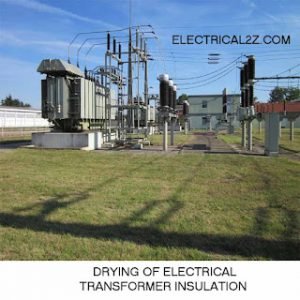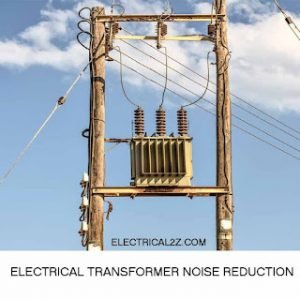Forces Generated in Transformer During Short Circuit | Transformer coils are subject to tremendous forces under short circuit conditions, because currents may be of the order of hundreds or thousands of amperes. Moreover force is proportional to the square of the current.
Transformer Short Circuit Forces
The force exerted on each conductor is given by the well-known formula:
F=Bi=Ki2
Where F=force on conductor in dynes per cm of length
B=flux density through conductor in gauss=Ki
I=current in conductor in absolute amperes
K=constant
Since the core flux passing through the secondary winding is destroyed by the short circuit current, the flux created by the primary current appears as leakage flux passing through between the primary and secondary coils.
In concentric windings, this creates radial forces acting outwards on the outer coil subjecting the conductors in it to tensile stress shown in figure. As the primary and secondary conductors carry currents in opposite directions, they repel each other. The entire outer winding may be imagined as a cylinder subject to internal hydraulic pressure and it therefore tends to burst outwards, the maximum force occurring on the outermost layer.
The mechanical force are tremendous in large transformers-they may even amount to a few tons-such as to stress the outer turns of copper beyond the elastic limit and therefore the turns on the outer layers are liable to be broken by tensile failure. To guard against this, it is necessary to put in special re-enforcement above the outermost layer to hold the coils in place. The inner coil, on the other hand, is subjected to compressive forces. Fortunately, in this case the coil is well supported on the core and there is very little possibility of any damage.
Another force which occurs is axial. The inner and outer windings are subject to axial forces if they are unbalance magnetically i.e. they will be displaced from each other axially. As a safeguard, the end insulation next to the core is made very strong and suitable wedges are driven between the ends coils and the surface of the core and its supports so that the whole coil assembly is rigidly held in position axially. In large transformers, the windings are specially seasoned by several cycles of drying-out in a hot chamber, and compression under hydraulic pressure, so that all slackness is taken up and the windings are fully shrunk.
Special tie road and pressure screws are provided on large transformers to take up the shrinkage and settlement of winding which occurs in service especially during short circuits. In order to prevent any magnetic unbalance which may occur when different voltage taps in the are selected, it is common practice to place the voltage taps in the are selected, it is common practice to place to voltage taps in the center part of the coil assembly and not at the ends as may usually be supposed specifies that a transformer having 4 per cent impedance voltage i.e. with a short circuit.
Current of 25 times the normal value, should be able to withstand a short-circuit for at least 2 seconds, the maximum current not exceeding 93 A/sq. mm. For impedance voltages of 7 per cent or above, the transformer should withstand a short circuit of 14 times or less the normal current for 5 seconds, at 62A/mm2.
Final Word
Hope you understand this article about the Forces Generates in Transformer During Short Circuit. Incase of any doubt please comment below. Subscribe our website to get every new post update to your email. Please follow our website @ElectricianWorld.Net for future updates. Thank you for visiting our website.



